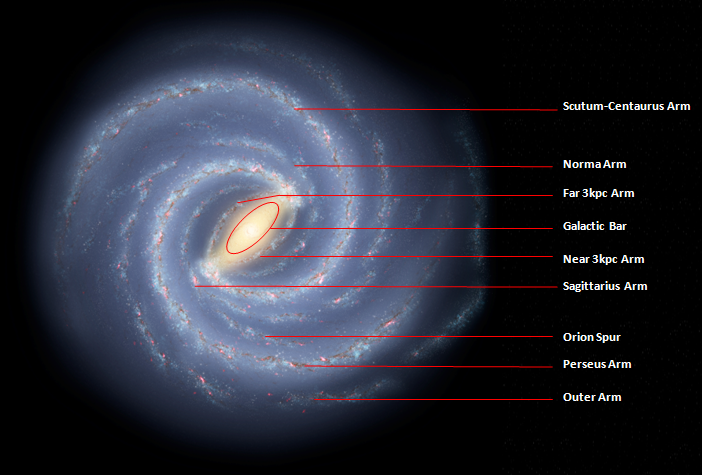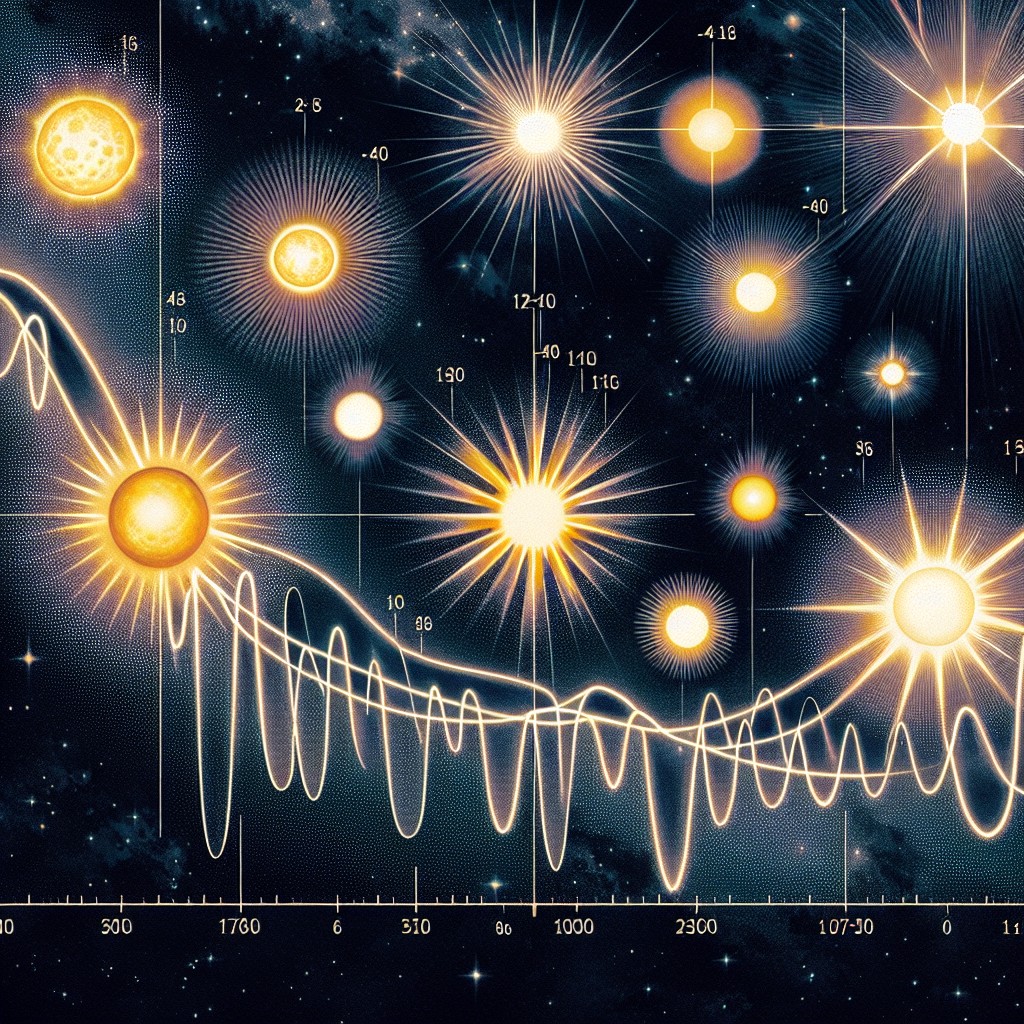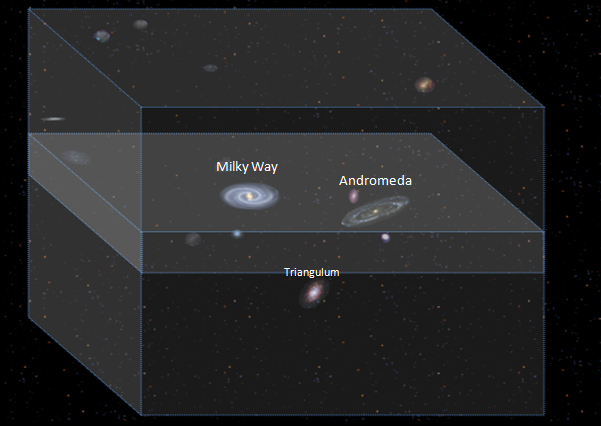The shape of the Milky Way Galaxy is a Barred Spiral Galaxy. Made of hudreds of billions of stars the Diameter of the disk is 100,000 light years with the average thickness is about 2,000 light years.
How the Milky Way Galaxy got its Name
Early Discoveries of the Milky Way
Formation and Destiny of the Milky Way
How the Milky Way Galaxy got its Name
In the times of the ancient Greeks people would look into the sky on a dark ‘moonless’ night and see a band of light streaked across the visible cosmos. They likened the sight to that of milk naming it galaxias (the Greek word for milk) from which we get the name galaxy and the Milky Way.

Image in the public domain obtained from Pixabay
Early Discoveries of the Milky Way
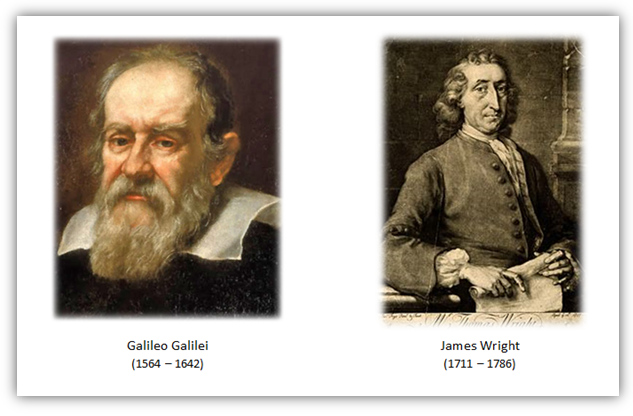
In 1609 Galileo used his telescope to look at the Milky Way and realised that the Milky Way was actually a large clump of stars set in close proximity to each other.
Later in 1750 an English physicist/astronomer called Thomas Wright suggested that the Milky Way may be a collection of stars in the shape of a convex lens and that our sun was one of the many stars within this mass. He published this theory in a book called ‘An original theory or new hypothesis of the Universe’. He came up with this idea when trying to explain the different perspectives of the Milky Way and gradually this theory became accepted by the Astronomers of the time.
Formation and Destiny of the Milky Way
It is believed that the Milky Way formed when the universe was very young (about 200-300 million years old) making our Galaxy approximately 13,500-13,400 million years old.
Gravity affects everything in the universe drawing matter together. Hydrogen and helium gas and other materials are drawn together to form stars and planets, and these stars are drawn together to make galaxies. Galaxies themselves are drawn together to form even larger galaxies and the Milky Way is a large galaxy. The Milky Way Galaxy’s growth is almost certainly the result of smaller galaxies combining with it in this action and the same process has determined its future.
Its destiny seems set with the Andromeda, as our galaxies are drawn ever closer together, in another several billion years they will collide.
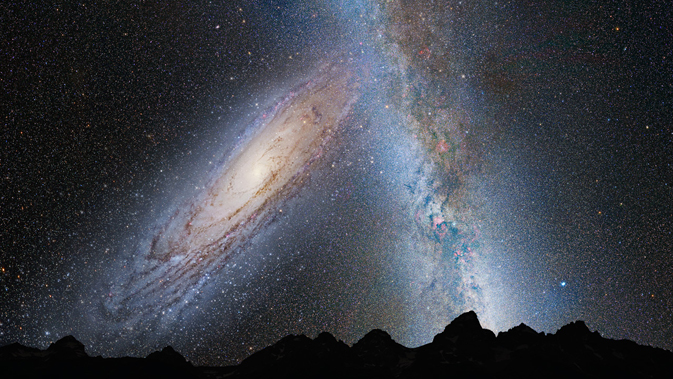
This illustration shows a stage in the predicted merger between our Milky Way galaxy and the neighbouring Andromeda galaxy, as it will unfold over the next several billion years. In this image, representing Earth’s night sky in 3.75 billion years, Andromeda (left) fills the field of view and begins to distort the Milky Way with tidal pull. (Credit: NASA; ESA; Z. Levay and R. van der Marel, STScI; T. Hallas; and A. Mellinger).
The Andromeda Galaxy (or M31 Galaxy) is the largest galaxy in our local galactic group (Andromeda is about 130,000 lightyears in diameter while the Milky Way Galaxy is about 100,000 light years). It is currently about 2.5 million lightyears away from our galaxy but they are moving towards each other at a current speed of 300km (or 180mi) a second and one day, in about several billion years from now, they too will merge as one super galaxy.
The new larger galaxy they will produce will be probably be an elliptical shape rather than the spiral shape they are both currently and even after they have collided it will take around two billion years for the super galaxy to take shape.
Collision sounds like the event will cause an impact but it is unlikely to be that violent for any inhabitants within the galaxies. Our Solar systems are fairly closed systems and although close proximity to other solar systems may cause comets to be propelled towards the sun the space between solar systems is vast.
Shape of the Milky Way
In the 1950’s studies of Hydrogen gas clouds in the Milky Way using radiation detectors gave astronomers a new view of the shape of our galaxy. The research showed that our Galaxy is actually a spiral shape rather than a convex lens but the initial idea by Thomas Wright was pretty accurate with the technology available at the time.
The artist’s impression of the Milky Way was created by Robert Hurt in 2008 based on data collected using NASA’s Spitzer Space Telescope which detects infrared light. Image credit NASA
The exact shape of the Milky Way galaxy is disputed by various astronomers depending on mainly their method of detection. When using an infrared detector, such as NASA’s Spitzer Space Telescope, the data would suggest two main arms and two lesser arms. It can be argued that this is due to the light frequency produced by certain types of stars such as Red Giants which produce a lot of infrared light. As these Red Giants are mainly concentrated in the Perseus and Centaurus arms, they would appear to be greater arms with the Sagittarius and Norma Arms appearing to have gaps and fragmented1.
Alternatively those astronomers using radio telescopes detect atomic Hydrogen, which present in all stars, would argue that a four major armed Galaxy is more accurate as their data shows no fragmentation of the Sagittarius and Norma Arms1.
Our Position in the Milky Way
Regardless of the two views on the structure some things remain the same. The shape of the Milky Way is still a ‘Barred Spiral’, the Diameter of the disk is 100,000 light years, The average thickness is about 2,000 light years, there is hundreds of billions of stars that within our galaxy and our Solar System’s position is on the Orion arm (about two thirds of the way out or 25,000 light years from the centre.
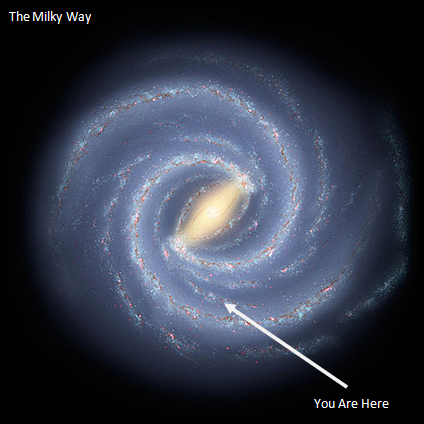
For many years astronomers attempted to work out where we were in the Milky Way including William Herschel and his son John. They attempted to count the amount of stars in different sections of the Milky Way and when they counted the same amount in the various sections they deduced that our solar system must lie somewhere within the galaxy’s centre. It wasn’t until the early 20th century when Harlow Shapely used a technique of measuring ‘Cepheid Variable’ type stars that lay in the globular clusters surrounding the galaxy that he could accurately determine our position, as well as the size of the Milky Way. He determined that we were closer to the edge of the galaxy and that it is approximately 100,000 light-years in diameter.
Our Solar system is travelling through the Milky Way at a speed of 220km a second (137 miles per second) orbiting the centre but even at that speed it takes 226 million years to make one orbit of the galaxy. That means that, as our solar system is only 4.5 billion years old it has made 20 revolutions so far.
Source
- http://galaxymap.org/drupal/node/171
